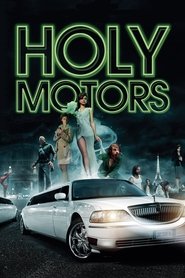There is a famous scene in Un Chien Andalou, the 1929 film collaboration between Luis Buñuel and famed artist Salvador Dalí. A young woman is cornered in her own apartment by a threatening man, and she reaches for a tennis racquet in self-defence. But the man suddenly picks up two nearby ropes and drags into the frame two large grand pianos, each leaden with a dead donkey, a stone tablet, a pumpkin and a bewildered priest.
This bizarre sketch serves as a better introduction to Leos Carax's Holy Motors than any elementary outline of its plot, which ostensibly follows 24 hours in the life of a 'man' who must play a number of extremely diverse roles around Paris... all for no apparent reason. Surrealism as an 'art movement' gets a pretty bad rap these days, and perhaps justifiably so. But Holy Motors and Un Chien Andalou serve as a good reminder that surrealism can be, well, good, actually. And if not quite 'high art', *Holy Motors* at least demonstrates surrealism can still be gripping, unnerving and hilariously funny. Indeed, whilst recalling the whimsy of the plot to a close friend many months later, the tears of laughter came unbidden to my eyes once again. ("And then the limousines...!")
Still, it is unclear how Holy Motors truly refreshes surrealism for the twenty-first century. Surrealism was, in part, a reaction to the mechanical and unfeeling brutality of World War I, and ultimately sought to release the creative potential of the unconscious mind. Clearly, Holy Motors is not responding to another continental conflagration, and it appears to be some kind of commentary on the roles we exhibit in this era of 'post-postmodernity' — the film is a sketch on our age of performative authenticity, perhaps, a doodle on the function and psychosocial function of work.
Or perhaps not. After all, this film was produced in a time that offers the near-universal availability of mind-altering substances, and this certainly changes the context in which this film was both produced. And, how can I put this, was intended to be watched.
Synopsis: We follow 24 hours in the life of a being moving from life to life like a cold and solitary assassin moving from hit to hit. In each of these interwoven lives, the being possesses an entirely distinct identity: sometimes a man, sometimes a woman, sometimes youthful, sometimes old. By turns murderer, beggar, company chairman, monstrous creature, worker, family man.

